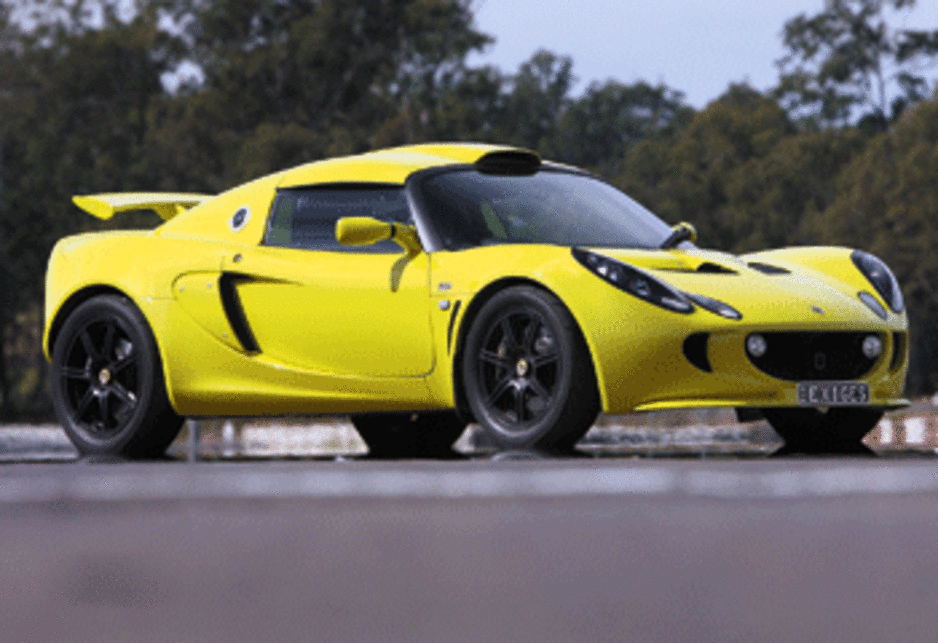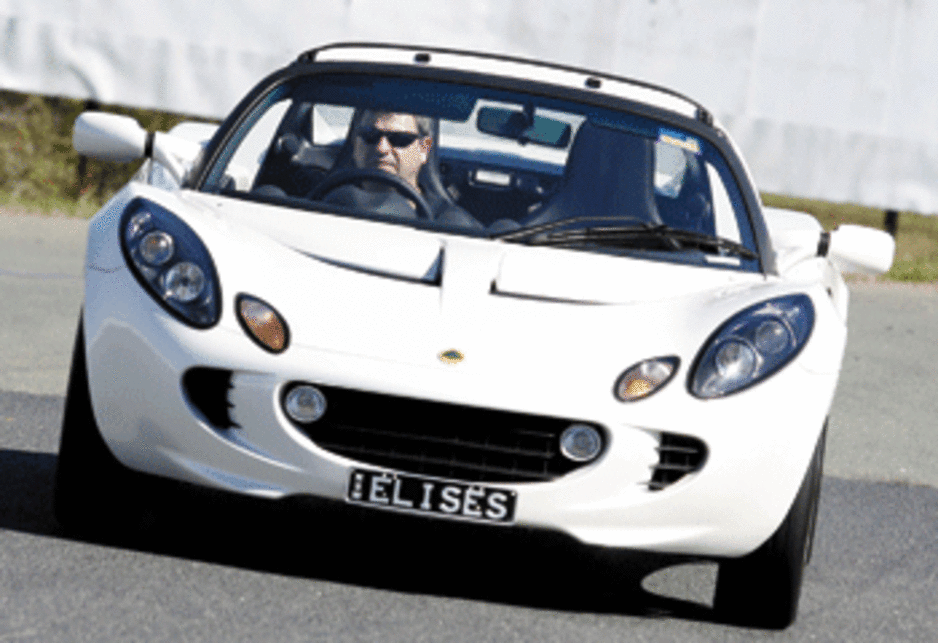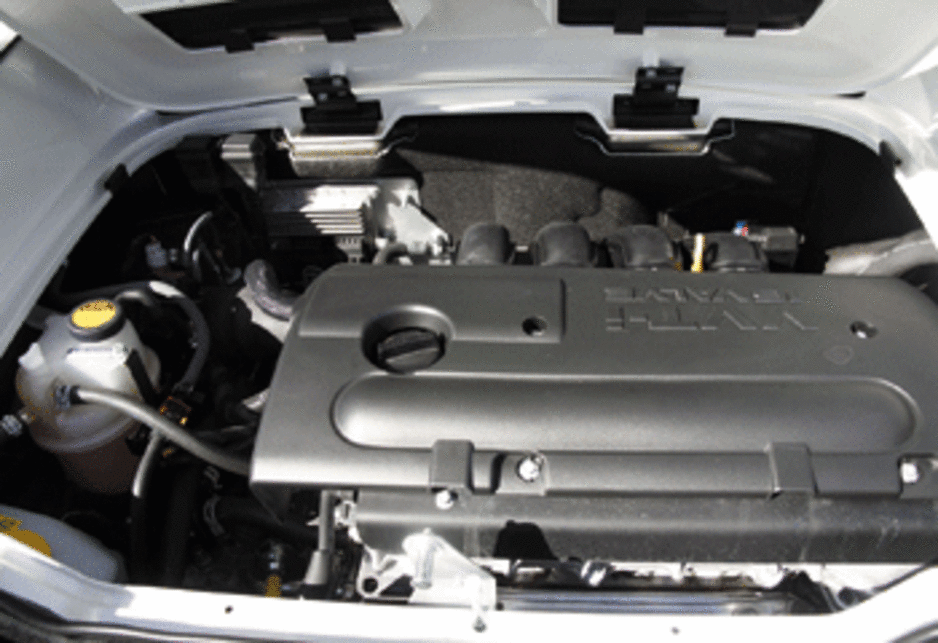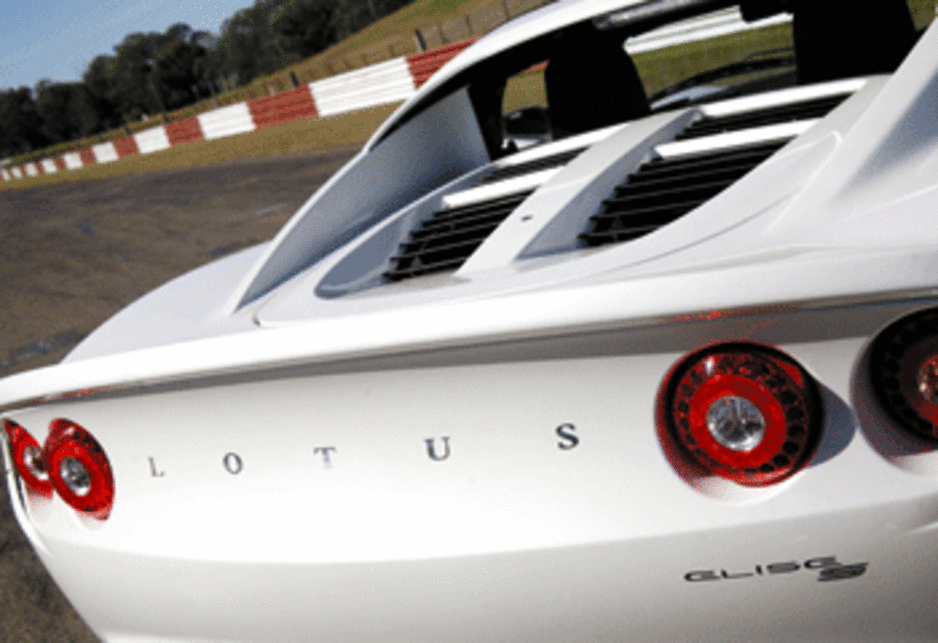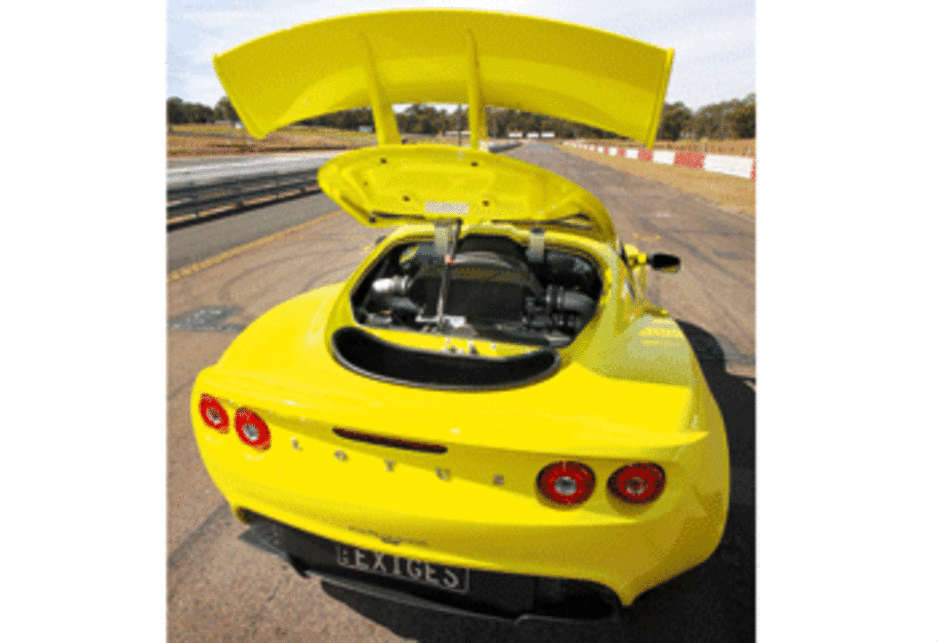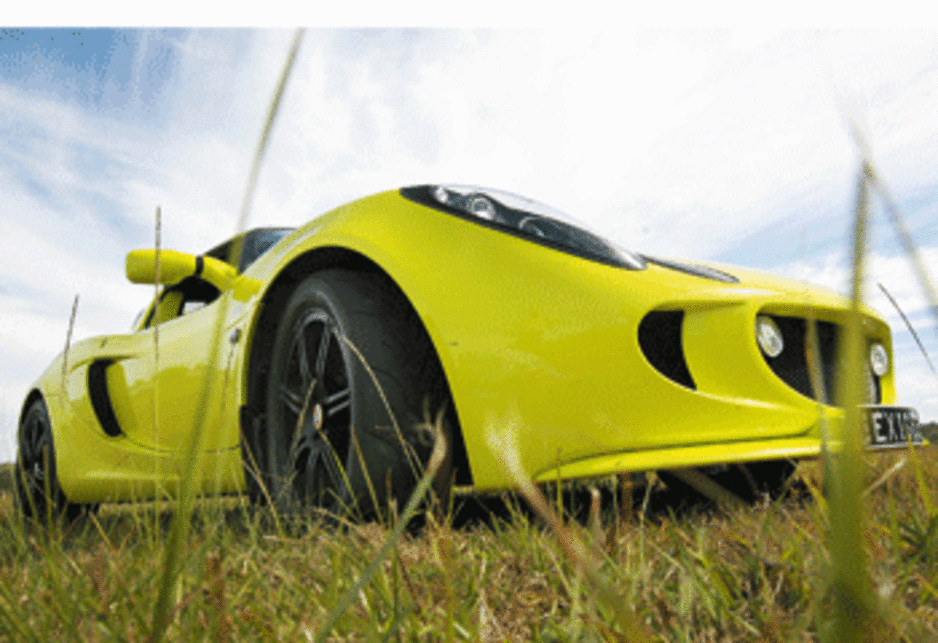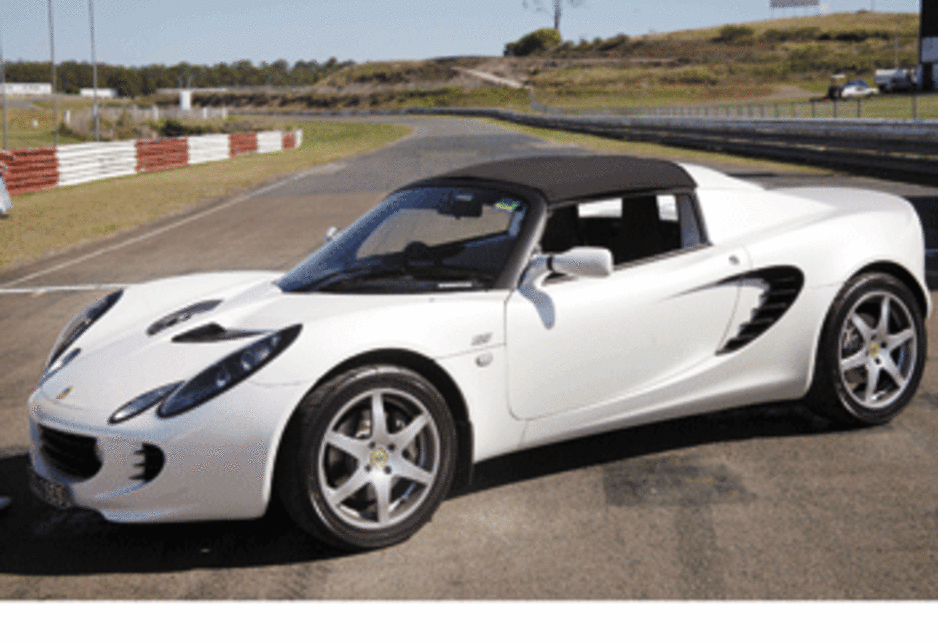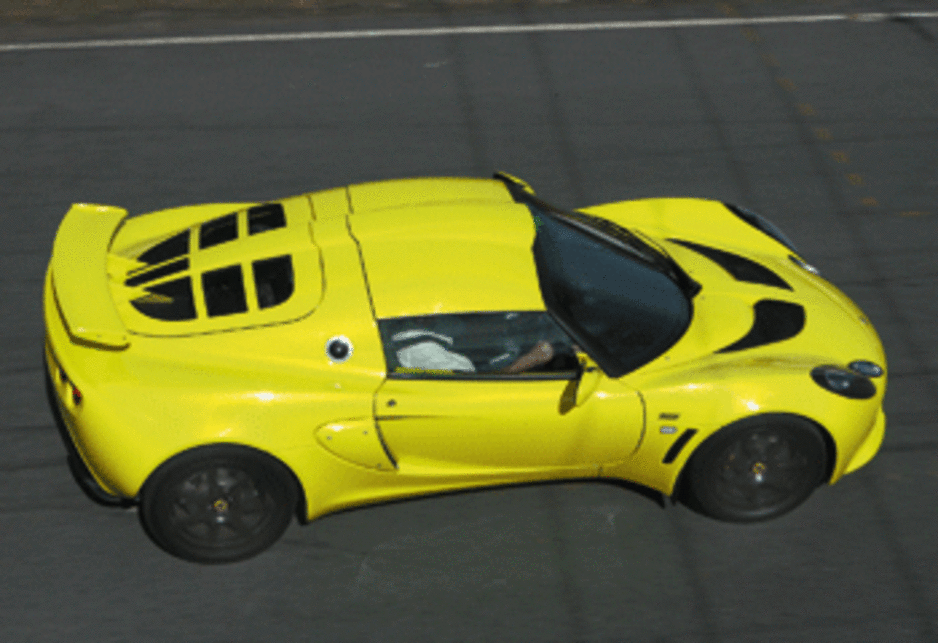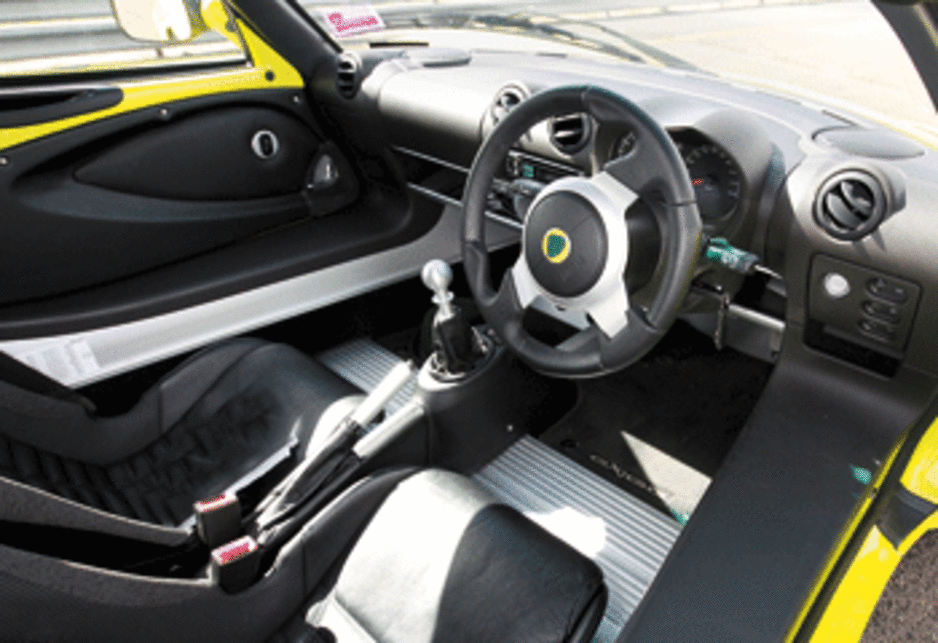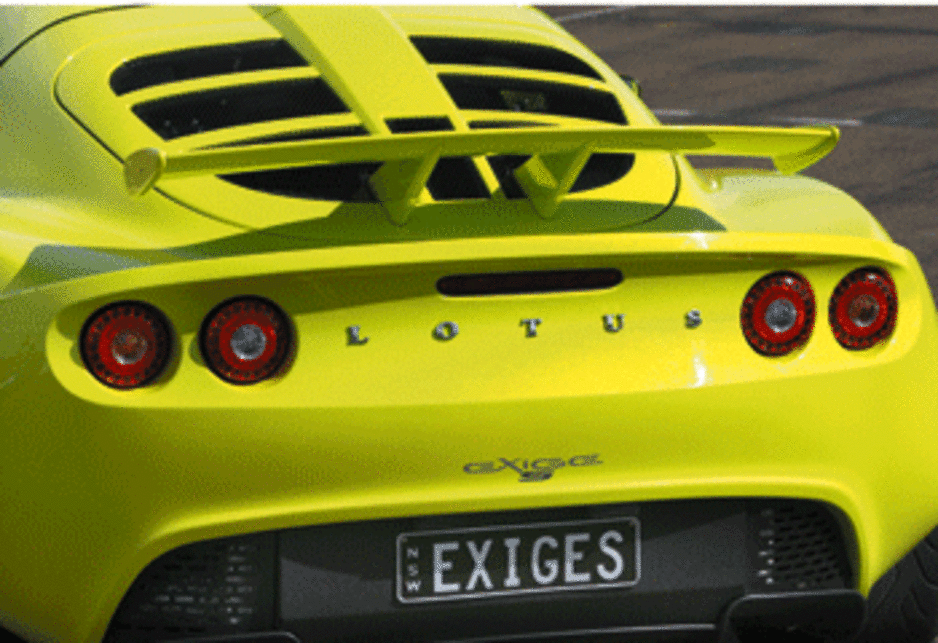
Lotus Elise 2008 Review
- Lotus Elise
- Lotus Elise 2008
- Lotus Elise Reviews
- Lotus Reviews
- Lotus Convertible Range
- Lotus Coupe Range
- Convertible
- Coupe
- Lotus
Derek Ogden has been behind the wheel of two in the space of a week.
ELISE
With the rag top on, getting in and out of the Lotus Elise is a pain in the bum . . . and arms, legs and head if you're not careful.
The secret is to push the driver's seat back as far as it will go, slide the left leg under the steering column, and slide in to the seat, keeping your head down. Getting out is the same in reverse.
The easy part is to take the cloth top off - just two clips, roll it up and store it in the boot with its two metal supports.
With the roof off it's a piece of cake by comparison. Step over the threshold, stand and, while holding the wheel, slowly drop in to the seat and adjust it for reach. You don't so much as sit in a Lotus as wear it.
Once inside the little roadster it's time to turn on the fun (er, sorry, engine). The car is powered by a 1.8-litre variable valve-timing Toyota motor, situated behind the two-seater cabin, which from 100kW can shoot the vehicle from zero to 100km/h in a tidy 6.1 seconds on the way to a top speed of 205km/h.
How can 100kW come up with such performance? It's all down to weight. At only 860kg, the Elise S has an aluminium chassis that tips the scales at just 68kg. Lightweight steel is also used.
Steering and braking is extremely responsive and so is the suspension which can be a teeth rattler on uneven surfaces.
This can be forgiven in a car that is out to capture the essence of sports-car driving. In fact, at $69,990 it's the perfect introduction to the genre.
An $8000 Touring Pack adds things like leather trim, iPod connection and sound-insulation panelling - not that the noise should bother the sports-car fan.
A Sport Pack at $7000 ups the ante with Bilstein sports suspension dampers, switchable traction control and sport seats.
EXIGE S
Now, if the Elise is the equivalent of a Lotus on training wheels, the Exige S is quite a different matter. In fact, it's the closest you can get to a track car legally on the road.
While the standard Exige pumps out 163kW of power, the 2008 Exige S is now available with an optional Performance Pack, pushing power to 179kW at 8000rpm - the same as the limited-edition Sport 240 - courtesy of a Magnuson/Eaton M62 supercharger, faster flowing injectors, plus a higher torque clutch system and an upsized roof scoop.
This power lift, with an increase in torque from the standard 215Nm to 230Nm at 5500rpm, helps rocket the Performance Pack Exige S from zero to 100km/h in 4.16 seconds to the accompaniment of a glorious bellow from the engine situated behind the cabin, while fuel economy is claimed by the maker to be a frugal 9.1 litres/100km (31 miles per gallon) on the combined urban/highway cycle.
Again, the old enemy, weight, has taken a beating with a power-to-weight ratio of 191kW per tonne putting the Exige S at supercar levels. It drives like a go-kart (or should that be `gone-kart', so quick is the Exige S off the mark).
Lotus Sport has had a hand in the pack, providing Formula One-style launch control in which the driver selects revs by means of a dial on the side of the steering column for optimum standing starts.
The driver is encouraged to floor the accelerator pedal and quickly release the clutch, in most situations a recipe for drivetrain damage and power-sapping wheelspin.
Not with this baby. A damper cushions the severity of the clutch/transmission engagement to minimise the stresses to the drivetrain and also wheelspin until 10km/h, after which the traction control takes over.
As with launch control, the amount of traction control can be adjusted from the driver's seat, altering on the move to suit the characteristics of corners.
It can be varied in 30 increments - a new instrument pack displays what degree of traction control is dialled in - from 7 per cent tyre slip to completely disabled.
The brakes get the Performance Pack treatment too with thicker, 308mm diameter cross-drilled and vented discs at the front operated on by AP Racing four-piston calipers, while standard brake pads are up-rated and there are braided brake hoses.
Direct steering offers maximum feedback to the driver with nothing, including power steering, between the wheel and the road to interfere.
Parking and manoeuvring at slow speed can be a toil, only compounded by the lack of vision from the cab.
The interior rear-view mirror is as useful as a hip pocket in a singlet, giving a clear view of nothing but the turbo intercooler which fills the whole of the back window.
It's left to the external mirrors to come to the reversing rescue.
The 2008 Lotus Elise and Exige ranges sport new instruments with an easy-to-read white-on-black design. Along with a speedo topping out at 300km/h, the indicator lights now flash on the dash to signal left or right, as opposed to a single light previously.
The shift light also changes from a single LED to three sequential red lights during the final 500rpm before the rev-limiter cut-out.
The dash also features a new high-definition LCD message panel that can display a scrolling message with vehicle system
information. The red on black helps legibility in direct sunlight.
The new instruments constantly display fuel, engine temperature and odometer. However, it can also display the time, trip distance or a digital speed readout in mp/h or km/h.
Warning symbols are out of sight until activated, keeping the instrumentation free from visual clutter and distraction and airbags are standard.
There's a new one-piece alarm/immobiliser and key with lock, unlock and panic alarm buttons. The Lotus Exige S sells for $114,990, plus on-road costs, the Performance Pack adding $11,000.
Stand-alone options include Bilstein one-way adjustable dampers and ride height, split-type seven-spoke ultra lightweight forged wheels, Lotus switchable traction control and a limited-slip differential.
LOTUS HISTORY
The stamp of Lotus founder Colin Chapman, with his mastery of leading-edge technology and adoption of race-bred features, can be found all over the Elise S and Exige S.
Lotus is credited with making the mid-engined layout popular for Indycars, developing the first monocoque Formula One chassis, and the integration of the engine and transaxle as chassis components.
Lotus was also among the pioneers in F1 in adding wings and shaping the under-surface of the car to create down-force, as well as the first to move radiators to the sides in the car to aid in aerodynamic performance, and inventing active suspension.
Chapman rode on the back of Lotus from a penurious London University undergraduate to multi-millionaire.
The company encouraged its customers to race its cars, and itself entered F1 as a team in 1958, a Lotus 18 entered by privateer Rob Walker and driven by Stirling Moss, winning the marque's first Grand Prix two years later at Monaco.
Major success came in 1963 with the Lotus 25, which, with Jim Clark driving, won Lotus its first F1 World Constructors Championship.
Clark's untimely death - he crashed a Formula Two Lotus 48 in April, 1968, after his rear tyre failed at Hockenheim - was a severe blow to the team and to F1.
He was the dominant driver in the dominant car and remains an inseparable part of Lotus' early years. The 1968 championship was won by Clark's teammate, Graham Hill. Other drivers to claim success with the marque were Jochen Rindt (1970), Emerson Fittipaldi (1972) and Mario Andretti (1978).
The boss was no slouch behind the wheel either. It is said Chapman lapped circuits within seconds of his F1 drivers.
After Chapman's death, until the late 1980s, Lotus continued to be a major player in F1. Ayrton Senna drove for the team from 1985 to 1987, winning twice in each year and achieving 17 pole positions.
However, by the company's last Formula One race in 1994, the cars were no longer competitive.
Lotus won a total of 79 Grand Prix races and Chapman saw Lotus beat Ferrari as the first team to achieve 50 GP victories, despite Ferrari having won its first nine years sooner.
Moss, Clark, Hill, Rindt, Fittipaldi, Andretti . . . it was a pleasure and a privilege to share a seat with them all.
Pricing guides
Range and Specs
| Vehicle | Specs | Price* | |
|---|---|---|---|
| S | 1.8L, PULP, 5 SP MAN | $20,350 – 25,740 | 2008 Lotus Elise 2008 S Pricing and Specs |
| R | 1.8L, PULP, 6 SP MAN | $13,970 – 18,370 | 2008 Lotus Elise 2008 R Pricing and Specs |
| SC | 1.8L, PULP, 6 SP MAN | $13,860 – 18,260 | 2008 Lotus Elise 2008 SC Pricing and Specs |
$13,970
Lowest price, based on third party pricing data


